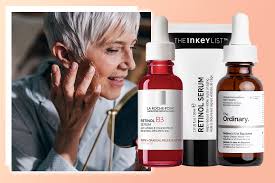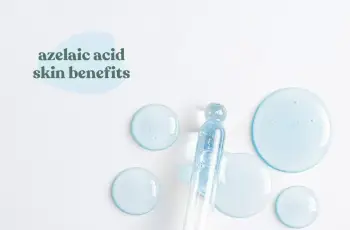
How Long Does Retinol Take To Get Rid Of Wrinkles?
Retinol is one of the most trusted ingredients in skincare when it comes to fighting wrinkles, fine lines, and other visible signs of aging.
But how long does it actually take before you see real improvements?
While you may notice subtle changes in skin texture early on, significant wrinkle reduction takes consistency, patience, and the right skincare routine.
The timeline for visible results varies depending on the type and strength of the retinoid you’re using.
Retinoids work by accelerating cell turnover, stimulating collagen production, and repairing damage within the skin.
However, the visible changes don’t happen overnight—even though cellular changes begin early in treatment.
Let’s break down what you can expect, the types of retinoids available, and which ones work fastest for wrinkle improvement.
Understanding Retinoids: Prescription vs Over-the-Counter Options
Retinoids are a group of compounds derived from vitamin A that are used to improve skin appearance, especially for acne and aging.
Retinol is a type of retinoid, but it’s the mildest form and available without a prescription in many cosmetic products.
Here’s a quick overview of the main types of retinoids:
Retinol: The most accessible over-the-counter retinoid; widely used for anti-aging and texture improvement.
Adapalene: Found in both cosmetic products and OTC acne treatments; also available in prescription formulations.
Tretinoin: A prescription-strength retinoid FDA-approved for both acne and signs of aging.
Tazarotene: Stronger than tretinoin and available by prescription only; approved for treating wrinkles and acne.
Trifarotene: A newer prescription retinoid used specifically for acne treatment.
Among these, only tretinoin and tazarotene are FDA-approved to directly treat wrinkles.
However, clinical studies also confirm that retinol, even though weaker, is effective in improving the signs of aging.
How Does Retinol Work to Reduce Wrinkles?
Retinol works by penetrating the outer skin layer and speeding up cell turnover, which helps slough off dead cells and reveal fresher skin underneath.
This process also stimulates collagen production, which helps firm the skin and smooth out lines.
The effects begin on a cellular level long before they become visible to the naked eye.
So while some changes may be happening in your skin early on, you won’t see major visible results for several weeks or months.
When Will You See Results from Retinoids Under a Microscope?
In one study comparing tretinoin 0.1% and retinol 0.1%, both showed cellular-level improvements at just four weeks when viewed under a microscope.
However, most people won’t see visible changes until about 12 to 24 weeks of consistent use.
This delay is normal and expected—retinoids are long-game treatments that require dedication and gradual skin adaptation.
How Quickly Can Retinol Improve Wrinkles?
In a one-year clinical study, 0.1% retinol improved the appearance of crow’s feet wrinkles by about 44% after 52 weeks of use.
That’s a substantial result—but it underscores the importance of long-term, consistent application.
Several factors affect how fast retinol works:
Strength of the product
Frequency of use
Skin sensitivity and tolerance
Other ingredients in your routine
Sun protection habits
You’ll also get faster results when combining retinol with other proven anti-aging ingredients like peptides, hyaluronic acid, or niacinamide.
Should You Start With a Strong Retinoid?
It might be tempting to start with the strongest retinoid available, but doing so can lead to excessive irritation, peeling, and redness.
This inflammation can temporarily worsen the skin’s appearance and cause setbacks.
That’s why it’s generally best to start with a lower-strength retinol product and build up your skin’s tolerance over time.
Once your skin adjusts, you can gradually move up to stronger formulations, including prescription options.
Which Retinoid Works the Fastest to Improve Wrinkles?
In a 2001 study, researchers compared the effectiveness of different strengths of tazarotene and tretinoin in reducing wrinkles.
Here’s what they tested:
Tazarotene 0.01%
Tazarotene 0.025%
Tazarotene 0.05%
Tazarotene 0.1%
Tretinoin 0.05%
All participants used their assigned retinoid every night for 24 weeks.
Tazarotene 0.1% delivered the most dramatic improvements by 8, 12, and 20 weeks—but came with more side effects.
By 24 weeks, the results of tretinoin 0.05% and tazarotene 0.1% were similar in terms of wrinkle reduction.
This means the strongest formula gets you results faster—but patience and persistence lead to similar outcomes.
How Fast Does Tretinoin Reduce Wrinkles?
Most people using tretinoin (especially 0.05% or higher) notice significant wrinkle improvement by the 24-week mark.
That’s around six months of consistent, nightly use before you’ll see clear, visible results.
A 1995 study compared 0.025% tretinoin, 0.1% tretinoin, and a placebo over 48 weeks.
As expected, the higher strength produced faster results, but both tretinoin groups showed similar results by the end.
This means even lower-strength tretinoin works—just more slowly, with fewer side effects.
Do Stronger Retinoids Work Faster Than Weaker Ones?
Yes, stronger concentrations improve wrinkles faster, but they’re also more likely to cause dryness, irritation, and peeling.
Weaker formulations like 0.01% or 0.025% take longer but tend to be more tolerable for sensitive skin.
In a study comparing 0.01% vs 0.05% tretinoin for 48 weeks, the stronger group saw better improvements by 24 weeks.
However, both groups improved over time, and the lower strength continued to work gradually beyond that point.
By week 48, the lower dose still hadn’t matched the results of the stronger cream, showing that higher strength is more efficient—if your skin can handle it.
How Quickly Does Tazarotene Improve Skin?
Tazarotene 0.1% is considered the most effective anti-aging retinoid available and is FDA-approved to treat wrinkles.
Visible improvements in fine lines, skin texture, and tone have been documented as early as eight weeks into treatment.
One study found that participants using tazarotene 0.1% on their arms showed skin texture and wrinkle improvements by 12 weeks.
However, the more potent the retinoid, the higher the risk of side effects like peeling, dryness, and irritation.
That’s why most dermatologists recommend starting with lower doses of tazarotene (such as 0.025%) and working up slowly.
Balancing Speed With Tolerance: What’s the Right Approach?
If you want to reduce wrinkles quickly, high-strength retinoids like tazarotene 0.1% or tretinoin 0.1% offer the fastest results.
However, they come with the cost of increased side effects that may require you to pause or reduce use.
A better long-term strategy is to start with a gentle retinol or low-dose tretinoin.
Once your skin becomes accustomed, increase the frequency or switch to a stronger product for faster results.
Inflammation from harsh retinoid use can worsen pigmentation and lead to accelerated aging, which is the opposite of what you want.
So slow and steady wins the race when it comes to wrinkle reduction.
The Bottom Line: How Long Until You See Fewer Wrinkles?
Mild retinol may show visible results in 12–24 weeks, but maximum benefit comes after 6–12 months of consistent use.
Tretinoin 0.05% or higher can improve wrinkles in 8–24 weeks, depending on tolerance and supporting skincare.
Tazarotene 0.1% may show visible improvements in as little as 8 weeks, but side effects can be stronger.
Remember: consistency is key, and the best retinoid is the one you can use regularly without causing skin irritation.
Need Help Choosing the Right Retinoid?
The fastest way to find the best retinoid for your skin—and reduce wrinkles effectively—is to match products to your Baumann Skin Type.
This ensures the formula fits your skin’s oil level, sensitivity, pigmentation risk, and barrier health.
Take the quiz today to discover the best anti-aging routine tailored specifically for your needs.
Because when you treat your skin with precision, retinol rewards you with smoother, firmer, more youthful-looking skin.


